How to Improve your G2 Rank: 5 Top Strategies for 2024
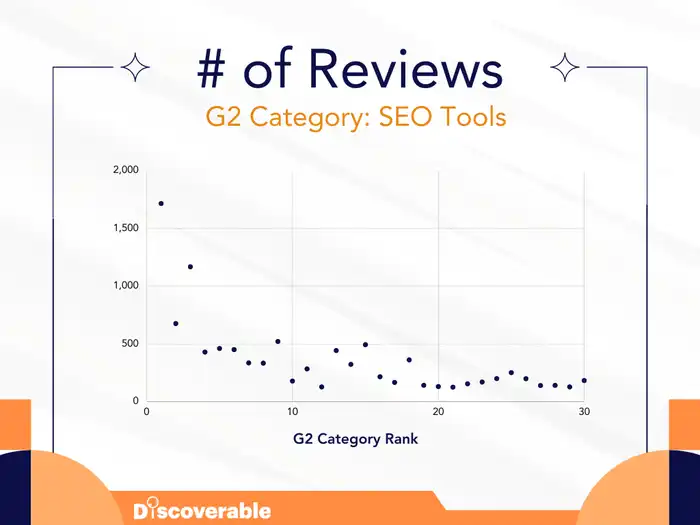
How many times have you visited a B2B site and seen G2 badges that tout ‘#1 CRM’, ‘Top Vendor in SEO Tools’, ‘See our 5-star reviews’, and so on?
Rhetorical question - it’s a lot. SaaS companies sure do love their G2 social proof. If we had a nickel for every site that directed us to G2, we could start our own SaaS company.
But there is a reason G2 is the review site everyone cares about. It’s the Coke to Capterra’s Pepsi, with the other review sites fighting for scraps.
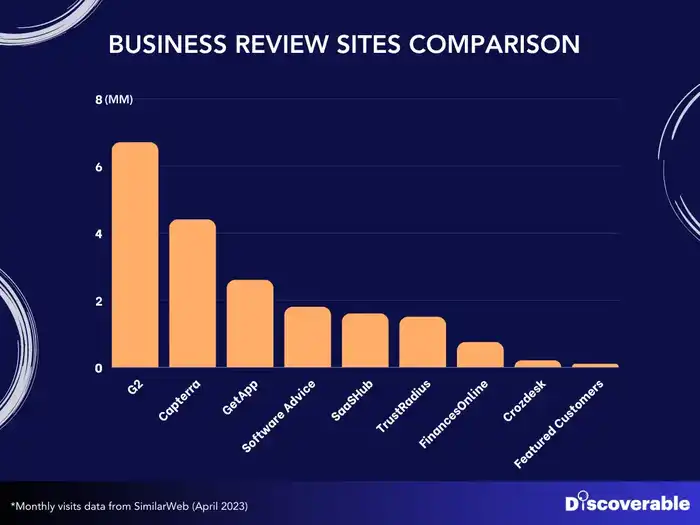
It’s no surprise, then, that G2 Rank Optimization (G2RO - you heard it first here) is of growing interest to SaaS companies. Moving up the G2 rankings is the new Google SEO.
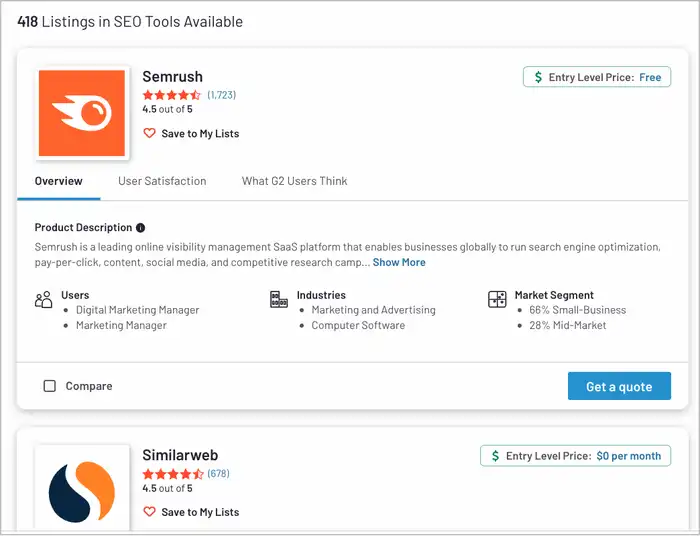
And while there are no easy hacks (just like with Google), improving your rank on G2 is not impossible. A small company in a crowded industry may never vault from spot #50 to #1, but moving up 5-10 spots (or more) is doable with a concerted effort.
This article explains the importance of ranking high on G2, how the G2 ranking algorithm works, and how to improve your own G2 category rank.
Table of Contents:
1. The importance of a high G2 rank
2. How we tried to reverse engineer the G2 algorithm
3. How does the G2 ranking algorithm work?
4. How to use G2 Grids to understand your ranking
5. 5 steps to improve your G2 ranking
The importance of a high G2 rank
To grow your business cost-efficiently, you need a strong inbound lead channel. Building this involves becoming discoverable to high-intent buyers actively doing product research.
Where are these buyers searching? Well, Google of course. But G2 is increasingly becoming a go-to source for SaaS research as well. Being a top spot on these lists means you’re reaching people searching for your type of product.
Most buyers, though, aren’t going to G2.com and doing a category search. Rather, they arrive on the category page after doing a relevant Google search. Indeed - over 70% of G2’s traffic is from Google searches, not direct visits.
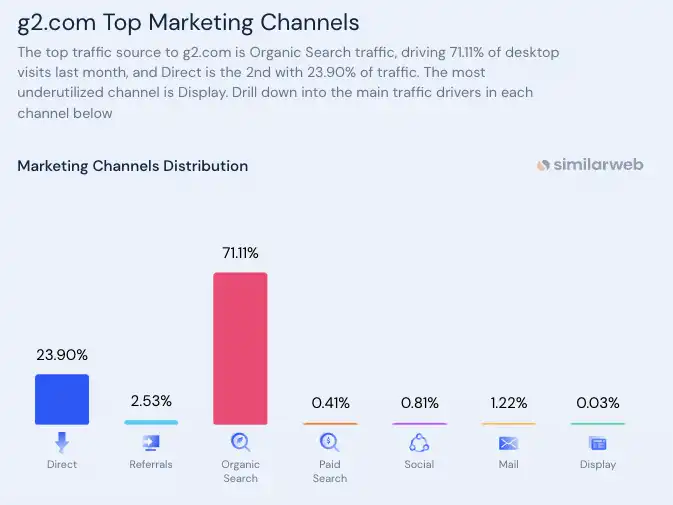
This is because G2 has excellent SEO, so most Google searches for ‘top (insert category) vendors’ will return the G2 category link within the first five results. A good G2 rank has double value, then: you’re more discoverable on both Google and G2 search results.
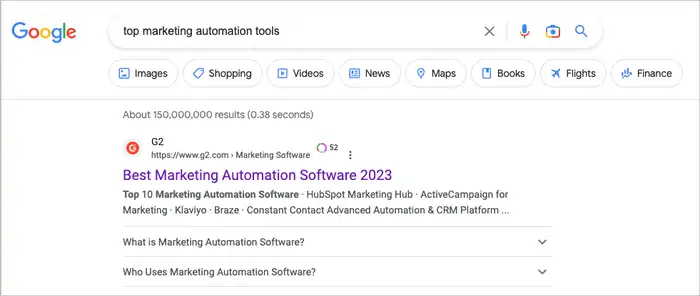
How we tried to reverse engineer the G2 algorithm
When building this guide, we assumed G2’s ranking algorithm was simple; a basic calculation using ratings and reviews, with a weighted average favoring recent reviews.
Turns out, it wasn’t that simple. In doing analysis across 20 G2 categories, we found consistent trends that made reverse engineering their exact algorithm impossible. Below looks at this analysis (for the sake of simplicity, we’ll highlight a representative category - SEO Tools).
We did discover a big correlation between # of reviews and rank - but it was far from a perfect fit.

Average star rating didn’t seem to correlate much, with higher spots often having lower scores than the average.
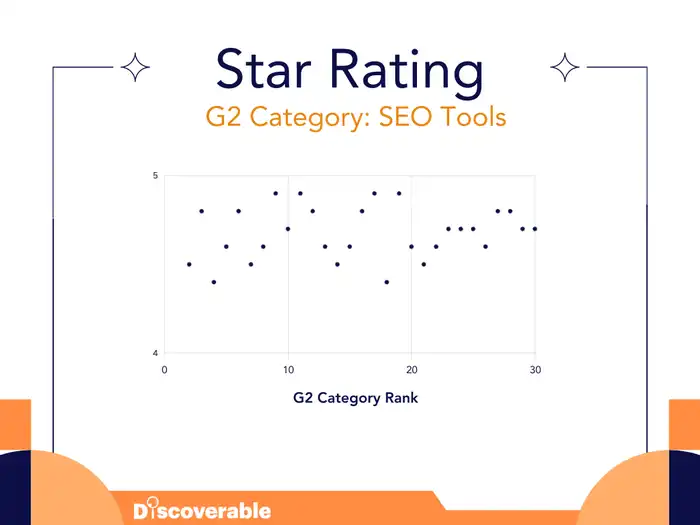
Employee count provided an additional strong signal, but again was far from linear.
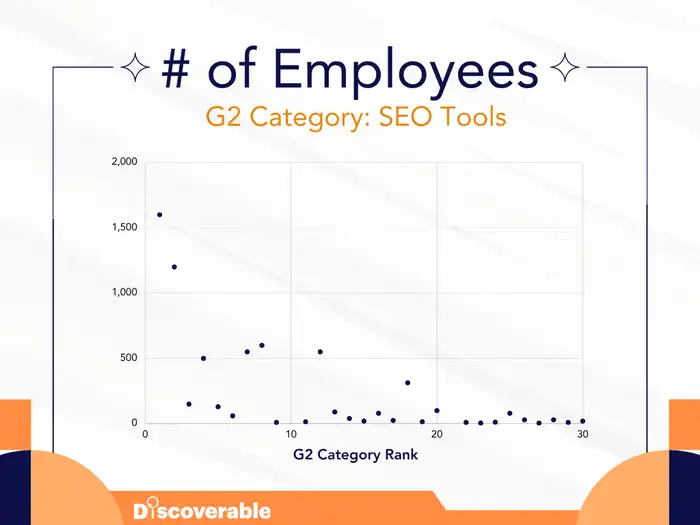
Clear trends emerged when we bucketed ranks by groups of five. There’s of course the obvious one that more reviews will, on average, put you above other listings.
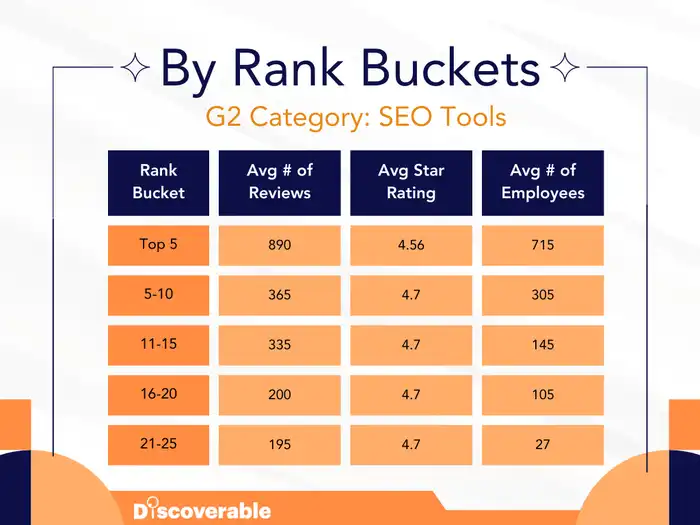
But when the # of reviews was similar, the tie breaker was clearly employee count.
As you can see, even though spots 11-15 had only 10% fewer reviews than spots 5-10, the average # of employees was substantially lower - around 50%. This highlights the weight that G2 must give to larger vendors.
You see that same trend with 16-20 vs 21-25. While the average # of reviews is effectively the same, the average # of employees is 75% lower. It’s clear that when review counts and ratings are similar, G2 favors the more established company.
While these findings were consistent across categories, we also kept encountering two outliers:
- Large companies with relatively few reviews would often rank higher than smaller companies with a lot more reviews. In this example from the Translation Management System (TMS) category, GlobalLink is #7 with 53 reviews, while Transifix has 345 and is #9. The difference? GlobalLink’s parent company, Transperfect, has 9,000 employees, while Transifix has 80.
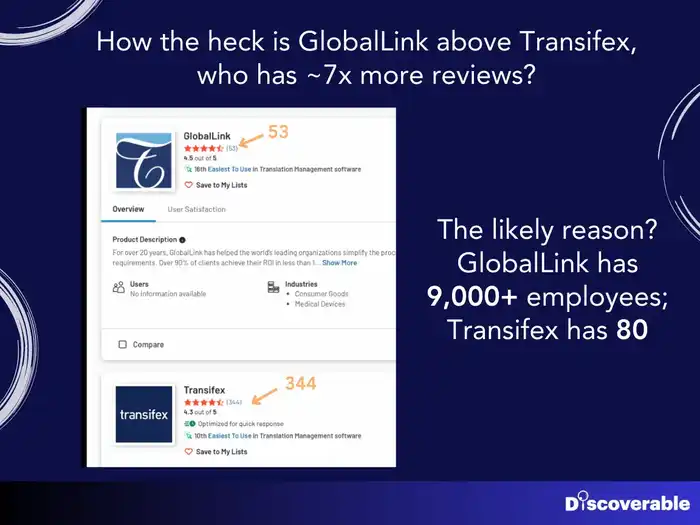
- Similar categories would have the same companies but in different orders. If the G2 algorithm was based purely on company info and the # of total reviews, this order would never change.
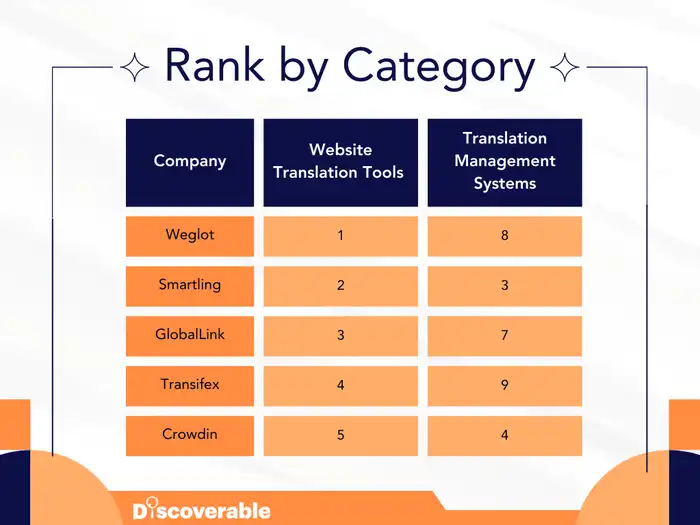
As an example, below looks at two similar categories: Translation Management Systems and Website Translation Software. As you can see, the companies are in slightly different orders.
So we realized a few things:
- Regardless of # of reviews, G2 prioritizes large market leaders.
- Driving more reviews – especially in a short time – is a great way to rise in rankings, but your ceiling may be capped if you’re a new or smaller player.
- Average rating doesn’t appear to have a big impact on rank, although we did notice that if your average rating is substantially lower than the category average, you do get penalized.
- Your category ranking isn’t based on total reviews. It’s based on reviews for that specific category.
This final point is complicated, so bear with us. When you sign up for G2, by default you are in one category. But you can request to be in more. Many large brands are indeed in multiple product categories. These categories correspond with the ‘Purpose’ dropdown reviewers must select when reviewing you.
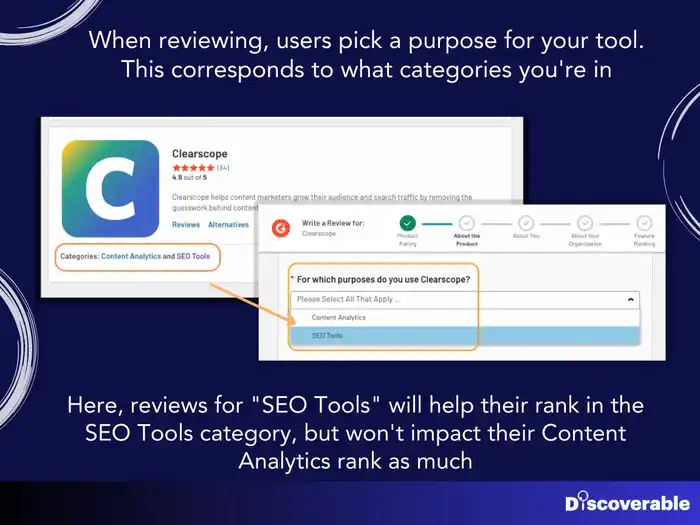
Note: this list is alphabetical and doesn’t lead with your main category (the names may also not always match).
We realized that the algorithm must factor in which purpose the user chose. If a user reviews you for Purpose #1 (associated with a specific category), then that review won’t have a huge impact on your ranking for Purpose #2 (a different category).
This makes sense. If you built a SaaS product that, for whatever reason, is both an SEO tool and an on-demand limousine app, why should positive reviews for the SEO Tool use case impact your ranking in the Taxi & Limo Service category?
Of course, in reality, the categories are more closely related. In the above Clearscope example, SEO involves content analytics, so the two purposes heavily overlap.
We should note that users can select multiple purposes in the same review. But we think it’s most likely that reviewers just pick one and move on (let’s not forget that nearly all reviews are incentivized, so people will be filling these out quickly).
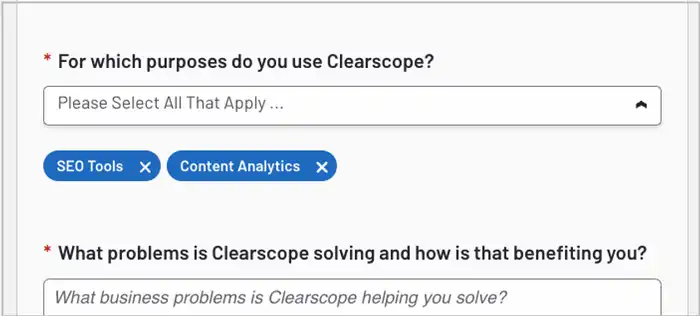
How DOES the G2 algorithm work?
In doing our research, we of course first read through G2’s Research Scoring Methodology. But we were hoping the page was more aspirational than realistic. Turns out we should have trusted it.
According to G2, these factors influence a company’s G2 Score, which is how lists are sorted by default. This score is broken down into two buckets: Satisfaction and Market Presence.
Satisfaction
- The star rating. Takes the “Likely to Recommend” question (1-10) and divides by two
- The statistical significance of ratings (aka, one 5-star review isn’t very telling)
- The quality of reviews (are customers writing long reviews or just saying, “It’s good” to get the $25 gift card) -Age of reviews (Grid Decay - see below) -Ratings of individual features
Market Presence
- Number of employees (LinkedIn, Crunchbase)
- Number of reviews & age of reviews (overlaps with Satisfaction)
- SEO traffic and ranks (Moz, SEMrush)
- Social followers
- Employee growth velocity
- Age of vendor
- Glassdoor ratings
G2 takes this section seriously. To rank in the Top 5, you need to be an established vendor.
G2 Grid Decay
G2 is transparent about the value of a review over time, calling it Grid Decay. This involves an exponential decay compounded daily, equaling roughly a 3% loss in value every month.
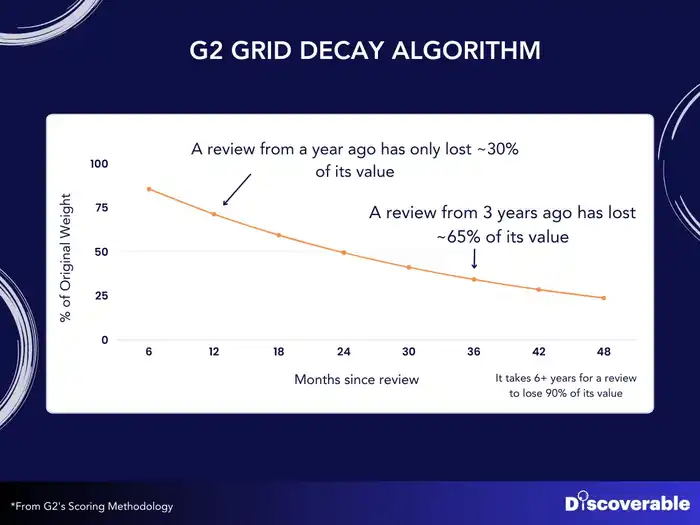
Meaning, one review from the current month has roughly the same value as:
- 1.2 reviews from six months ago
- 1.45 reviews from a year ago
- 2.1 reviews from two years ago
- 3 reviews from three years ago
G2’s Grid Decay formula tells us two things:
-
Companies happy with their position don’t have to constantly run incentivized review campaigns. After six months, a review has lost just ~17% of its value. That’s not a lot. Unless you’re trying to outpace someone else, doing a concerted review push twice a year is enough to maintain your rank.
-
If there’s a company above you with a lot of reviews - but no recent ones - you have a real opportunity to beat them with a big review campaign. Of course, # of reviews is just one factor in the algorithm, but it’s the big one.
How to use the G2 Grids to understand your ranking
Each category with at least 6 products with 10+ reviews (and 150 total reviews) has a G2 Grid. You’ll find this on the right side of the category page, and clicking it will lead you to a bigger version (which is also on the bottom of the page).
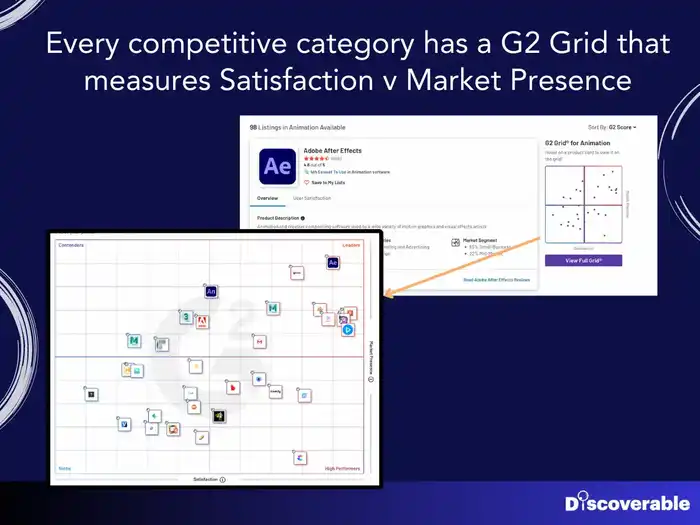
The G2 Grids display a four-quadrant breakdown of Market Presence versus Satisfaction. The vendor who is furthest to the right and highest up will always be #1 in the category. Tie-breakers are usually given to the company furthest to the right versus higher up.
These grids correspond with the rankings. The companies in the top right quadrant are nearly always above everyone else. To get highly ranked, then, you need to enter this quadrant.
Your spot on the grid provides insights into your opportunities and challenges, as we outline below:
Top right
You’re likely already in the Top 5-10. Great job! As an established leader who has invested in incentivized review campaigns, you’ve earned your spot. Climbing higher, even to #1, is possible if you can drive a significant influx of reviews. However, if you’re considerably lower on the Y-axis than #1, you could have trouble supplanting them.
Bottom right
You’re likely in spots #6-20, depending on the category’s competitiveness. The further down or to the left you are, the worse your ranking. Moving up is challenging; you can’t magically triple your employee count. There are growth opportunities, nevertheless, especially since the # and recency of reviews improves both Market Presence and Satisfaction. Your goal is to move as right as possible, via a lot of reviews, and shoot to be the first ranking outside of the top-right vendors. With enough positive reviews, you may even enter the top right.
Top left
You’re likely in spots #6-20, depending on the category’s competitiveness. You’re probably ranking below many vendors from the bottom right, as G2 prefers Satisfaction over Market Presence.
This quadrant is the least populated. Companies with excellent market presence generally also invest in driving reviews. The good news is - it’s easier to move right than up! If you’re here, you have a great opportunity to push for reviews and move into the Top 5.
Bottom left
We’re sorry for you. G2 believes you have little market presence, and users who have reviewed you are not super satisfied. There is room for improvement, but it requires a decent number of 5-star reviews. Your best bet is to shoot for the bottom right quadrant and at least rise above the other bottom-left vendors.
Not on the grid
To make the grid, it appears you need 10 or more reviews in that category. If you’re ranked but not on the grid, then you haven’t hit that number. This spot is a wild card. If you’re a large company without many reviews, you could reach Top 5 with a tsunami of new reviews.
5 steps to improve your G2 ranking
Below outlines 5 steps you can take to improve your G2 ranking, via a combination of more reviews, better reviews, and improved market presence.
1. Choose one category to be in
By default, you’re placed in one software category. You can request more, and most large companies are in multiple.
As mentioned, however, your category ranking is tied not to overall company reviews, but reviews for that specific category (the Purpose dropdown option when a reviewer goes to rank you). Unless reviewers pick every purpose in a review, there’s a chance reviews are ‘watered down’ - in that rather than moving up substantially in one category, you move up only slightly in three.

Rather than requesting multiple categories, contemplate being in just one. This means every single review will count toward that category’s rank.
As a caveat, we’re not saying there’s no value to multiple categories. In fact, if you’re a market leader in the Top 10 of multiple categories, don’t reduce your category count. You’d lose overall visibility.
But if you’re hyper-focused on improving your rank in one category, the one-category approach will maximize the impact of an incentivized review campaign.
2. Identify realistic targets
We believe it’s always possible to move up in the rankings. How much depends on where you are on the grid and the category’s competitiveness. Whether or not you prioritize G2 reviews as an initiative (and it doesn’t always make sense) boils down to these questions:
- How do you rank compared to similarly-sized companies?
- How does your # of reviews and ratings compare to similar-sized companies?
- How do you compare to slightly larger companies (50-100 more employees)?
- Are you close to the Y or X axes?
There’s no magic number for ideal rank, but you should be aiming at the very least for Top 30, as there are 30 listings per page.
If you don’t think 30 is possible, you shouldn’t pursue a G2 campaign at all (in SEO Tools, for instance, one would need ~150 reviews to enter Top 30). In practice, though, Top 10 is the actual number you should be aiming for.
Once you’ve identified a rough number of reviews needed, you can gauge the work involved. Pushing for 25 reviews is much different than 250, but both are doable (depending on client base size). The latter just takes more time and money.
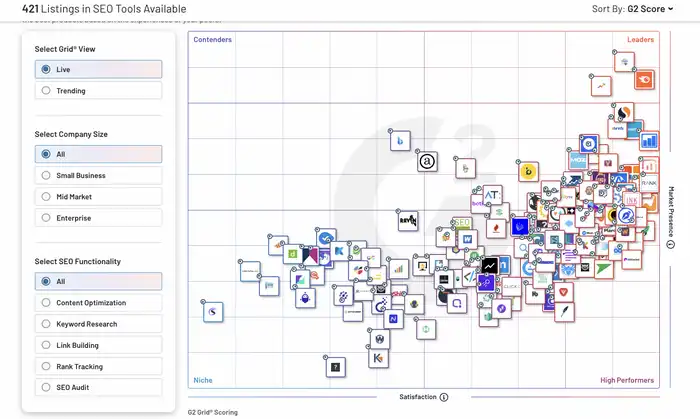
3. Run a G2 incentivized review campaign
Unsurprisingly, regardless of your grid position, reviews are invaluable. It’s also a two-for-one deal: according to G2, your # of reviews and recency of them influences both Market Presence and Satisfaction.
We’re guessing you’ve already run an incentivized campaign at some point. If not, you’ve likely at least received a vendor email offering $25-$50+ for a G2 review, so you know what we mean. The most generous offer we’ve gotten was $100 AND a free pair of Allbirds (something only a SF start-up would think of).
Here’s advice for a successful campaign:
- Focus on just G2 reviews. Many companies ask for G2 and Capterra reviews at the same time, but this could lead to a paradox of choice and fewer total reviews. Plus, Capterra’s ranking is pay-to-play, so if you want a high spot on Capterra, just pay for it. Since bad star ratings can hurt you, first identify customers likely to give 5-star reviews. Start the campaign with this cohort and add additional groups as needed.
- Don’t be stingy. It would be amazing to drive 200 new reviews in a month. If you pay reviewers $50 each, that’s $10K to jump in rankings - which is going to pay dividends down the line. Run a maintenance review campaign every six months. You don’t need it more often, and less often leaves you vulnerable to competitors.
- If you’re using Amazon gift certificates, keep in mind Amazon doesn’t allow for cross-currency gifting, so you’ll need to find an alternative for those users
- Expect some “Our company doesn’t allow us to accept incentives” responses.
- Use an email drip campaign tool and shoot for 5 automated emails over 3 weeks.
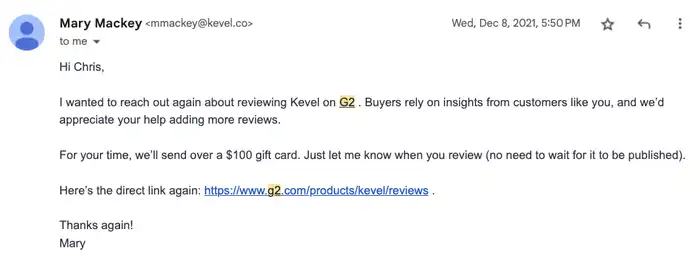
- Personalize emails as much as you can.
- If possible, have a Client Success team member send the emails; otherwise, you can use someone in Marketing.
- If you’re happy with your rank, run a maintenance review campaign every six months. You don’t need it more often, and less often leaves you vulnerable to competitors.
4. Invest in growing your market presence
You can’t magically grow from 50 to 400 employees, but G2’s Market Presence factors in more than just employee count. Follow these steps to look more like an industry leader:
- Get listed on every relevant business directory. This includes long-tail business review sites, local listing directories, SaaS directories, etc.
- Create social accounts on all social networks, even if you don’t actively post on them.
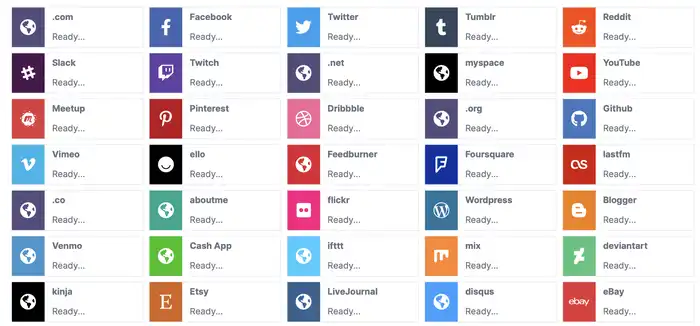
- Keep LinkedIn and Crunchbase up-to-date.
- Run an internal Glassdoor campaign to increase the # of Glassdoor reviews.
- Produce more content! G2 factors in site traffic and SEO, so building a content engine helps with rankings.
- Invest in a Technical SEO audit, which can greatly help with Google rankings.
5. Consider a G2 paid plan
G2 emphasizes that their rankings aren’t pay-to-play. Meaning, customers with paid plans don’t get an extra boost in rank. It’s an even playing field.
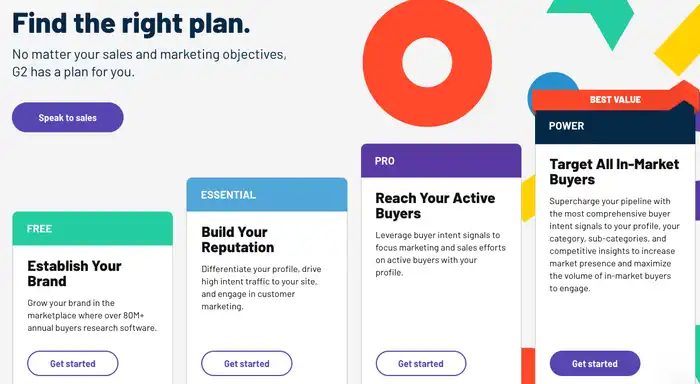
But a paid plan does come with a G2 account manager. These are experts with unique insights on how to improve your position. They will also run review campaigns for you.
You can tell if a competitor has a paid plan by looking for:
- An orange “Try it Free” button on their listing
- A banner/video at the top of their profile
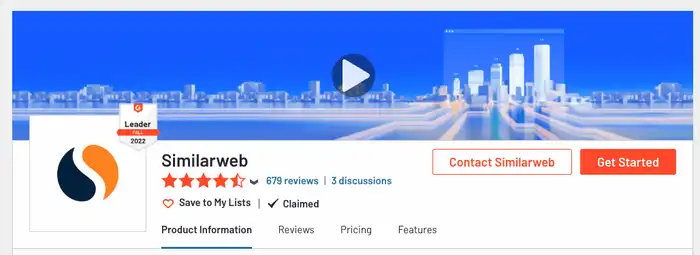
(Note: We’re not affiliated with G2 and don’t receive kickbacks. These subscriptions can cost $10K+/year, so it’s also not a decision to take lightly.)
There you go. You now have more information about how the G2 algorithm works and how to improve your G2 ranking. We truly believe it’s possible to jump in ranks through a concerted effort to increase Satisfaction (via more good reviews) and Market Presence (via investing in discoverability tactics).
Is #1 feasible for everyone? No. But getting to Top 10 is, assuming you at least have a medium-sized presence in the space.